Advanced Typography - Task 1: Exercises
30.8.2023 - 20.9.2023 (Week 1 - Week 4)
Vanessa Kei Kurniadi / 0360525
Bachelor
of Design (Hons) in Creative Media
Advanced Typography - Task 1:
Exercises - Typographic system & Finding Type
AdTypo_1_Typographic Systems
“All design is based on a structural system”
According to Elam, 2007, there are 8 major variations with an infinite
number of permutations:
Axial: all elements are organized to the left or right of a single axis.
The axial axis doesn’t necessarily have to be straight. It can be bent.
You can even use multiple axis.
fig 1.1 Axial system
-
Radial: all elements are extended from a point of focus.
fig 1.2 Radial system
-
Dilatational: all elements expand from a central point in a circular
manner
fig 1.3 Dilatational typography system
-
Random: elements appear to have no specific pattern or relationship
fig 1.4 Random typographic system
-
Grid: a system of vertical and horizontal division
fig 1.5 Grid typographic system
-
Transitional: An informal system of layered banding
fig 1.6 Transitional typographic system
-
Modular: A series of non-objective elements that are constructed in as
standardized units
fig 1.7 Modular typographic system
-
Bilateral: All text is arranged symmetrically on a single axis
fig 1.8 Bilateral typographic system
The typographical organisation is complex because the elements depend on
communication to function. Additional criteria such as hierarchy, order of
reading, legibility, and contrast also come into play.
The typographic systems are akin to what architects call
shape grammars. The typographic system has unique rules that
provide a sense of purpose that focuses and directs the
decision-making.
Student designers may initially find the system awkward, but as work
develops and understanding of the system emerges, its creative potential
(in terms of its permutations or combined uses) is realized.
Many designers focus primarily on the grid system for design and are
unaware of the potential that other systems hold. The different systems
are one of many possibilities that affords some level of distinctiveness
from the grid systems in certain situations.
Understanding the systems organisation process allows the designer to
break free from “the rigid horizontal and vertical grid systems of
letterpress” (Elam, 2007).
“Typography is the use of type to advocate, communicate, celebrate,
educate, elaborate, illuminate, and disseminate. Along the way, the words
and pages become art.” – James Felici, the Complete Manual of
Typography
AdTypo_2_Typographic Composition
2 aspects of Typography:
Typography pertains to the creation of letters, the arrangement of large amount of text within given space.
The rule of thirds
The rule of thirds is a photographic guide to composition, it basically
suggest that a frame (space) can be divided into 3 columns and 3 rows. The
intersecting lines are used as a guide to place the points of interest,
within the given space.
Realistically no one would ever use the rule of thirds when there are
other more favorable options
fig 2.1 Rule of Thirds
From the 8 mentioned system, the most pragmatic and most used system is
the Grid system (or Raster Systeme), which is derived from the grided
compositional structure of Letter Pressing printing.
It was further enhanced by what is now called the Swiss (Modernist) style
of typography, with its foremost proponents being Josep Muller Brockmann,
Jan Tschichold, Max Bill and such.
While it may seem to be old and rigid, the versatility of the system and it’s (to some degree) modular nature tends to allow an infinite number of adaptations. Thus it continues to remain popular.
Fig 2.2 Grid system examples
In reaction to this very ordered approach to the typography of the
modernist era, a group of younger designers began to question and
challenge this notion of order. There was a method to their madness. Order
was replaced with apparent chaos but this chaos was exciting and ‘new’ for
a generation that was being exposed to Punk anti-establishment thought and
music. As such the asymmetry, random, repetition, dilatational and radial
systems began to take root in the lexicon of designers.
Other models/ Systems
Environmental Grid
This system is based on exploring an existing structure or combining
numerous structures. An extraction of crucial lines both curved and
straight is formed. The designer then organizes his information around
this super-structure, which includes non-objective elements to create a
unique and exciting mixture of texture and visual stimuli.
It is an interesting manner of exploration and provides context to the forms developed in the designs, due to the fact that the system/structures were developed around key features of an environment associated with the communicators of the message.
fig 2.3 Environmental Grid system examples
The image above showed the process of the environmental grid. First, take
an image and reduce them until only the key elements and shapes remain,
and use them as the base for the letter placement and composition.
Form and Movement
This system is based on the exploration of an existing Grid System.
Developed to help students to explore; the multitude of options the grid
offer; dispel the seriousness surrounding the application of the grid
system; and see the turning of the pages in a book as a slowed-down
animation in the form that constitutes the placement of image, text, and
color.
The placement of a form (irrespective of what it is) on a page, over many
pages, creates movement. Whether the page is paper or screen is
irrelevant.
fig 2.4 static versions of the form placed on spread (grids were hidden). Care was taken to ensure visual connections and surprises on every page. The forms could represent images, text or color.
fig 2.5 the level of complexity increases as newer elements are
introduced in a incremental fashion: addition of one color, then image,
then dummy text and so on.
AdTypo_3_Context & Creativity
Handwriting
We study handwriting because the first mechanically produced letterforms
were designed to directly imitate handwriting. Handwriting would become the
basis or standard for form, spacing, and conventions that mechanical type
would try and mimic.
The shape and line of hand-drawn letterforms are influenced by the tools
and materials used to make them: sharpened bones, charcoal sticks, plant
stems, brushes, feathers and steel pens all contributed to the unique
characteristics of the letterform.
Another factor included the material upon which the forms were written:
clay, papyrus, palm leaf, animal skins (vellum and parchment) and paper.
Fig 3.1 the evolution of Latin alphabets
Cuneiform (c.3000 B.C.E)
The earliest system of actual writing. Was used In a number of languages
between the 34C. B.C.E through the 1st century C.E. Its
distinctive wedge form was the result of pressing the blunt end of a reed
stylus into wet clay tablets. The Cuneiform characters evolved from
pictograms. It is read from left to right.
Fig 3.2 Cuneiform
Hieroglyphics 2613-2160 B.C.E
The Egyptian writing system is fused with the art of relief carving. The
system was a mixture of both rebus and phonetic characters – the first link
to future hieroglyphic images has the potential to be used in three
different ways:
1.
As ideograms, to represent the things they actually depict.
2.
As determination to show that the sign preceding are meant as phonograms
and to indicate the general idea of the word.
3.
As phonograms to represent sounds that “spell out” individual words
Early Greek / 5th C. B.C.E
Built on the Egyptian logo consonantal system, the Phoenicians developed a
phonetic alphabet consisting 22 letters, which then was adopted by the
Greeks who added the necessary vowels.
·
Was comprised of only capital letters, written between 2 guidelines
organized into horizontal rows.
·
Direction of reading was not yet fixed. Was often read in a format known as
boustrophedon or “as the ox ploughs”
·
Were drawn freehand, not constructed with compasses and rule, and they had
no serifs
In time the strokes of the letter grew thicker, the aperture lessened, and
serifs appeared. The new forms, used for inscriptions throughout the Greek
empire, served as models for formal lettering in imperial Rome.
Those Roman inscriptional letters – written with a flat brush, held at an angle like a broad nib pen, then carved into the stone with mallet and chisel – have served in their turn as models for calligraphers and type designers for the past 2000 years
Roman Uncials / 4th century
By the 4th century Roman letters were becoming more rounded, the
curved form allowed for less strokes and could be written faster.
English Half Uncials, 8th C.
In England the uncials evoved into a more slanted and condensed form. While
English and Irish uncials evolved, writing on the European continent
developed considerably and needed a reformer. Luckily it came in the
Carolingian Handwriting Reform.
Emperor Charlemagne 8 C.CE
After the fall of the Roman Empire, the end of a central advanced culture
resulted in general illiteracy and the breakdown of handwriting into diverse
regional styles. For 300 years the knowledge of writing was kept alive
mainly in the remote outposts of religious cloisters and retreats.
Carolingian Minuscule
A court school was established under the direction of Alcuin of York.
During Charlemagne’s patronage book production increased and language was
standardized – pronunciation and spelling as well as writing conventions –
capitals at the start of a sentence, spaces between words and punctuation. A
new script emerged: the Carolingian minuscule. It was used for all legal and
literary works to unify communication between the various regions of the
expanding European empire.
Carolingian minuscule was as important a development as the standard Roman
capital – this style became the pattern for the Humanistic writing of the
fifteenth century; this latter, in turn, was the basis of our lowercase
Roman type.
Black Letter 12-15 C.CE
Gothic was the culminating artistic expression of the Middle Ages,
occurring roughly from 1200-1500. The term Gothic originated with the
Italians who used it to refer to rude or barbaric cultures north of the
Italian Alps.
The vertical supplanted horizontals as the dominant line in architecture;
the pointed arch of the Romans; the almond shape, or mandorla, was
preferred. Gothic writing forms reflected this aesthetic. Blackletter is
characterized by tight spacing and condensed lettering. Evenly spaced
verticals dominated the letterforms.
The Italian Renaissance
As the Gothic spirit reached its apex in other areas of Western Europe,
Humanist scholars in Italy were slowly reviving the culture of antiquity.
The Renaissance embrace of ancient Greek and Roman culture spurred a
creative wave through Italian art, architecture, literature and letter form
design.
The Humanist admired the Carolingian script, which had clear open
handwriting. Humanists named the newly rediscovered letterforms Antica. The
Renaissance analysis of form that was being applied to art and architecture
was directed toward letterform – resulting in a more perfect or rationalized
letter.
Movable Type / 11 C. – 14 C.
Printing (wood block) had already been practiced in China, Korea, and Japan
(Dharani Sutra, AD 750). Earliest known printed book (AD 868) is the Diamond
Sutra: 16’ scroll with the world’s first printed illustration.
China had attempted to use movable type for printing but was unsuccessful
due in part to the number of characters and material used (clay).
In late 14 C. several decades before the earliest printing in Europe, the
Koreans established a foundry to cast movable type in bronze – allowing the
dismantling and resetting of text. With the creation of their new script
Hangul, the Koreans would succeed where the Chinese failed. To conclude, the
introduction of moveable type was introduced in the 1000 – 1100 CE. This
innovation was pioneered in China but achieved in Korea (Diamond Sutra). In
the late 1300- 1399 CE. Several decades before the earliest printing in
Europe (Guttenberg’s bible 1439), the Korean established a foundry to cast
movable type in bronze.
The reason why we talked about Greek influence on Rome, but not Egyptian or
Near Eastern influence on Greece, is because in the 19th century
and the rise of the modern British Empire, it became out of style to credit
Africa or Africans with anything of value, and therefore Greece and rome
were elevated over much older, much more influential civilization,
specifically Ancient Egypt, but also less extensive or old civilizations
like Mesopotamia, the Indus Valley, China, etc.
Evolution of Middle Eastern Alphabets
It is important to note that while the Phoenician letter marks a turning
point in written language – use of sound represented in letters – the script
itself has been possibly influenced by the Egyptian Hieroglyphic and
Hieratic Script.
The Evolution of the Chinese Scripts
Indus Valley Civilization (IVC) / 3500-2000 BCE
The oldest writing found in the Indian subcontinent the IVC is as yet
undeciphered and seems to have been somewhat logo-syllabic in nature. “Some
believe that these symbols are non linguistic, while other argue that they
represent Dravidian languages because they are very similar to some of the
southern Indian proto scripts that were in the southern Indian
geography.
The Brahmi Script / 450 – 350 BCE
The Brahmi script is the earliest writing system developed in India after
the Indus script. It is one of the most influential writing systems; all
modern Indian scripts and several hundred scripts found in Southeast and
East Asia are derived from Brahmi.
The origin of the script is still much debated, with most scholars stating
that it was derived or at least influenced by one or more contemporary
Semitic scripts Semitic, while others favour the idea of indigenous origin
or connection to the much older and as yet undeciphered Indus script.
Handwriting
The oldest writing systems present in Southeast Asia were Indian scripts.
There were a few, but the most important would be Pallava (or Pallawa in
malay), a South Idian script originally used fro writing Sanskrit and
Tamil.
Pallava was highly influential, becoming the basis for writing systems
across Southeast Asia. But Pallava wasn’t the only Indian script in use in
the Malay Archipelago. Another was Pra-nagari, an early form of the Nagari
script, used in India for writing Sanskrit.
Does this mean Nusantara never had writing systems of its own? Were they
all just borrowed from India?
This is where we get to what is perhaps Indonesia’s most important
historical script: Kawi. Based on Nagari, but indigenous to Java. The word
Kawi comes from the Sanskrit term kavya meaning poet. The interesting
thing about Kawi is that is was the script used for contact with other
kingdoms. Because it was so widespread, Kawi became the basis of other
scripts in both Indonesia and the Philippines.
This means that ancient kingdoms of the Malay Peninsula would have used
Indian scripts and Kawi to write old Malay language.
Indonesia has a great number of historical writing systems.
“Scholars have theorized the existence of an ancient Gujerati-derived
Proto-Sumatran writing system which was the basis of medieval scripts on
the Island.”
Jawi, the Arabic- based alphabet. We know Jawi was introduced along with
Islam. But how this happened is more interesting than “we converted and
adopted the Arabic alphabet”
Ancient Hindu societies in both South and Southeast Asia were classist
and often caste-based. The lower classes were generally illiterate.
Obviously, Islam didn’t change this completely, but it did encourage
teaching for the sake of proselytization.
When those traders engaged in missionary work, they would have taught
Jawi to people that might otherwise not have learned to read and write.
This allowed it to spread among the upper and middle-class in the trading
ports. However it took a while for Jawi to supplant other scripts, and in
some areas never did so completely.
In modern Malaysia, jawi is of greater importance because it’s the script
used for all our famous works of literature. Every hikayat and Malay charm
book is written in Jawi. Unlike Indonesia, we don’t have a huge wealth of
pre-Jawi inscriptions and writings – this is part of the reason why we
tend to ignorantly claim that Jawi is “tulisan asal Melayu” which is of
course untrue.
All systems of writing have some form of influence. To claim complete
originality is inaccurate and some would say ignorant. History gives us
context but it also gives designers the opportunity to design, research,
or help codify to communicate and understand better our collective
heritage.
Fig 3.23 Demak was a Muslim Javanese Kingdom, yet here’s a manuscript
from the 19th century which still uses the traditional
Javanese
So why is handwriting important in the study of type/typography?
We study handwriting because the first mechanically produced letterforms
were designed to directly imitate handwriting. Handwriting would become
the basis or standard that for form, spacing, and conventions mechanical
type would try and mimic.
For decades, Asia/East has neglected much of its written heritage, and by
adapting western printing technologies (letterpress, linotype. Unicode),
it was difficult to create much of the old text in printed form because it
would take know-how, much time, effort, and money.
However with a mild renaissance in the East, with the advent of computer
programmers in large numbers, we are starting to see the proliferation of
indigenous scripts on phones, tablets, and computers.
Programmers and type Design
More vernacular scripts are being produced by software giants (Google):
in their employment a great many Asian programmers and designers. More and
more vernacular and multi-script typefaces – a term coined by Muthu
Nedumaran – are being produced to cater to situations where the written
matter is communicated in the vernacular script or vernacular and Latin
scripts.
Local Movements and Individuals
In Malaysia, murasu.com was spear-headed by programmer and typographer
Muthu Neduraman. The programming language needed to encode the different
types of vernacular writing systems was cracked by Muthu. The system is
now used in mobile phones and desktops.
Huruf a local group of graphic designers interested in the localized
lettering of latin and vernacular letters painted or inscribed on walls
and signages are amongst the more prominent organizations digitizing and
revitalizing typefaces in Malaysia.
Ek Type and Indian Type Foundry are organizations that have done ground
breaking work with the development or vernacular typefaces in India.
In South East Asia, the movement has not organized and coordinated itself
well enough. But with increasing awareness and examples from larger
neighbours like India with their large talent pool and resource, the
knowledge behind methods used and approaches taken are more accessible
geographically speaking.
Creativity and originality are properties that are most often
intertwined. It is important for young designers to look inward and
examine their histories, civilization, culture and communities to bring
these past developments into the future and develop on them instead of
blindly appropriating cultures and developments that have no context,
relatability or relevance.
Creativity inspiration should begin by observing our surroundings and
exploration of our collective histories.
AdTypo_4_Designing Type
Why design another typeface? Xavier Dupre (2007) in the introduction of
his typeface Malaga suggested 2 reasons for designing a typeface:
-
Type design carries a social responsibility so one must continue to
improve its legibility.
-
Type design is a form of artistic expression.
Here are some purpose and limitations behind the following
typeface:
·
Frutiger
is a sans serif typeface designed by the Swiss type designer Adrian
Frutiger in 1968 specifically for the newly built Charles de Gaulle
International Airport in France.
o
Purpose: to create a clean, distinctive and legible typeface that is
easy to see from both close up and far away. Extremely functional
o
Consideration/limitation: letterforms needed to be recognized even in
poor light conditions or when the reader was moving quickly past the
sign. He tested with unfocused letter to see which letterforms could
still be identified.
·
Verdana (1996) for Microsoft was made by Matthew Carter. Many of
his fonts were created to address specific technical challenges, for
example, those posed by early computers.
o
Purpose: the font was tuned to be extremely legible even at very small
sizes on the screen due in part to the popularity of the internet and
electronic devices.
o
Consideration/limitations: The font exhibits characteristics derived
from the pixel rather than the pen, the brush of a chisel. Commonly
confused characters, such as lowercase “i”, “j”, and “l”.
· Bell Centennial was created by Matthew Carter. The sole purpose
of this font is to be used in telephone directories. Back when the
company used Bell Gothic as their font, the ink often bled off the
letters, causing some visual problems. Bell Centennial was made by
making a specific corner on the intersection, so when it’s printed, it
will come out like normal fonts. The name Bell Centennial was made in
honour of the company’s 100th anniversary.
· Edward Johnston was the creator of the hugely influential London “Underground” typeface, which would later come to be known as “Johnston Sans” (1916). He was asked to create a typeface with “bold simplicity” that was truly modern yet rooted in tradition. Johnston‘s design, completed in 1916, combined classical Roman proportions with humanist warmth.
- Purpose: As a new typeface for posters and signage at London's Underground Railway.
- Consideration / Limitation: Johnston's remit was to unite the London Underground Group, the different companies all using the same rails and tunnels.
- Research
- Sketching
- Digitization
- Testing
- Deploy
- Designer has an inexplicable need driven by interest to design a typeface, and seek out a form that comes close to fulfilling a desire.
- Designer indentifies a gap/ problem and thus endeavors to solve it through the design of the typeface.
- The designer has been commissioned or the student-designer has a task to complete that involves designing a typeface.
- to represent a concept
- to do so in a visual form.
- Law of Similarity
- Law of Proximity
- Law of Closure
- Law of Continuation
- Law of Symmetry
- Law of Simplicity (Praganz)
- …
Most of the time I ended up scratching the design because I was not satisfied and found it too hard to move on from there. So in the end I tried to make an axial system from a straight vertical line. From there I just did whatever came to mind. I put text on any blank areas and work my way from there.

|
| fig 6.13 Transitional System |
Apparently I didn't make the bottom one look enough like the first one (which now I think is due to the block of text which I should've separated into individual rows, but I guess the angle of the text is also not following the flow)
From this point on until the end, the book gave us a really detailed and in-depth explanation of the systems and lots of variations of examples that are given for each of the typographic systems. It's a great book to learn from if you wanna learn more about each detail of the systems.



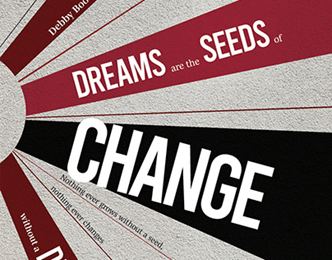





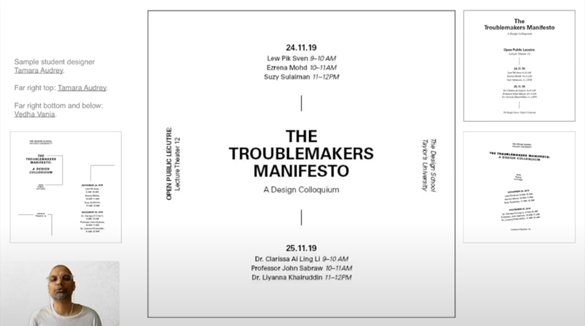












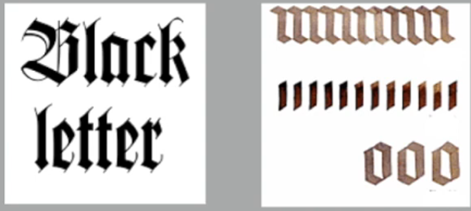

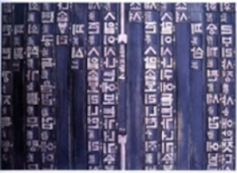













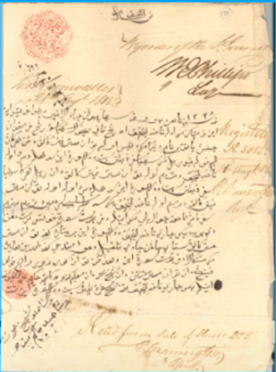








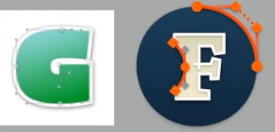



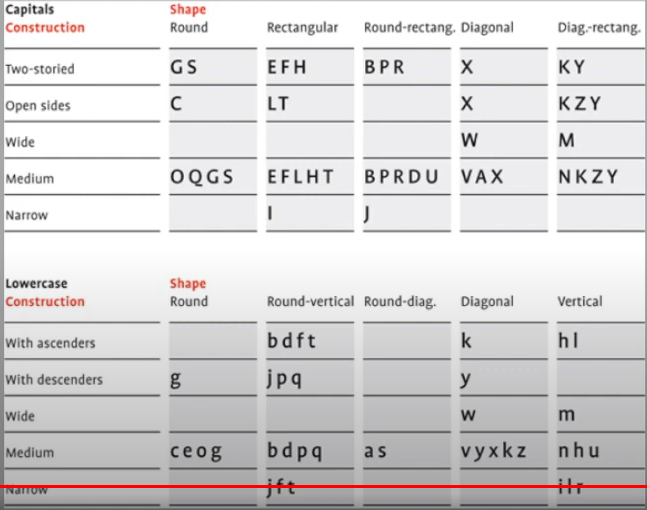






















































Comments
Post a Comment